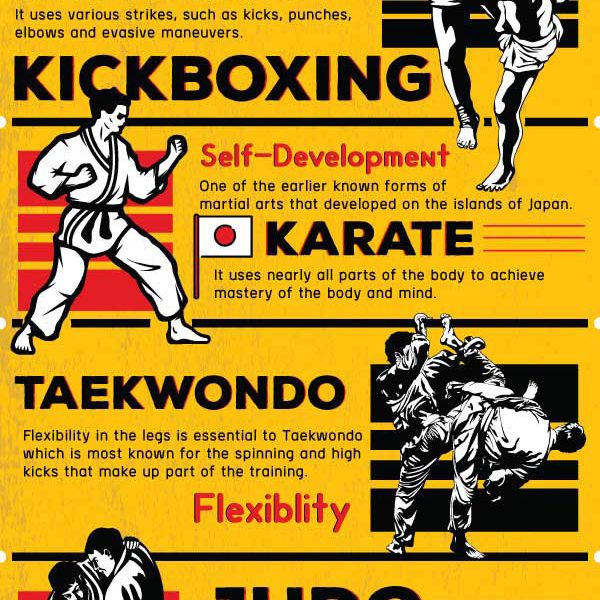Debunking The Different Fighting Style Designs: From Martial Arts To Taekwondo
Debunking The Different Fighting Style Designs: From Martial Arts To Taekwondo
Blog Article
Short Article Author-Aldridge Clay
Are you tired of sensation overwhelmed by the large world of martial arts? With so many styles to select from, it can be easy to obtain lost in a sea of punches, kicks, and mysterious names. https://martial-arts-kids-classes22109.blogdanica.com/33180796/trip-towards-making-a-black-belt-browsing-through-the-levels-in-fighting-style-direction fear not!
This discussion will certainly debunk the different martial arts styles, taking you on a trip from the powerful strikes of Martial arts to the dynamic kicks of Taekwondo. Prepare yourself to uncover the beginnings, techniques, and viewpoints behind these old art types.
So, tighten your belt and prepare to start an informing expedition right into the captivating globe of fighting styles.
Origins of Martial Arts Styles
The origins of martial arts styles can be traced back to old people and their requirement for self-defense and battle techniques. Throughout background, different societies developed their own special approaches of battling, each with its own collection of techniques and philosophies.
In China, for instance, martial arts styles such as Martial art and Tai Chi were developed as a way of protection and boosting physical and mental wellness.
In Japan, the samurai warriors developed designs like Martial arts and Judo, concentrating on discipline, accuracy, and mastery of the body.
Likewise, in Korea, Taekwondo emerged as a martial art stressing high kicks, fast motions, and psychological determination.
These early civilizations laid the foundation for the diverse variety of fighting styles designs that exist today, each with its own rich background and cultural significance.
Techniques and Educating Approaches
To master martial arts designs, professionals should discover different strategies and training techniques.
Methods are the certain motions and actions made use of in fight, such as strikes, kicks, throws, and blocks. Different martial arts designs have their own one-of-a-kind set of techniques that experts need to grasp via rigorous training.
Training techniques vary depending on the design, however they usually entail a mix of physical fitness, drills, sparring, and kinds.
Physical fitness is vital to construct strength, flexibility, and endurance. top rated martial arts near me help specialists improve their techniques and enhance their rate and precision.
Competing allows practitioners to exercise their techniques in a managed, realistic environment. Types, likewise referred to as kata, are prearranged series of activities that assist practitioners develop muscle memory and focus.
Philosophies and Principles
Checking out the approaches and principles of fighting styles styles can give you with a deeper understanding of your selected discipline. Each fighting style has its own unique approach and set of directing principles that shape the way it's exercised.
As an example, Karate stresses technique, regard, and self-control. It instructs experts to focus their minds and bodies, allowing them to safeguard themselves while maintaining a sense of internal peace.
On the other hand, Taekwondo positions a strong focus on rate, dexterity, and flexibility. Its principles are rooted in the tenets of politeness, honesty, willpower, self-constraint, and resolute spirit.
simply click the following internet page that you have actually checked out the origins, methods, and approaches of different martial arts designs, you have a deeper understanding of these ancient self-controls.
Think of a young karate trainee, exercising with steady resolution and emphasis, appearing boards with an effective punch.
Their trip showcases the dedication and strength called for to grasp a fighting style, reminding us that with discipline and determination, anything is possible.
